#Saint Nicolas
Explore tagged Tumblr posts
Text
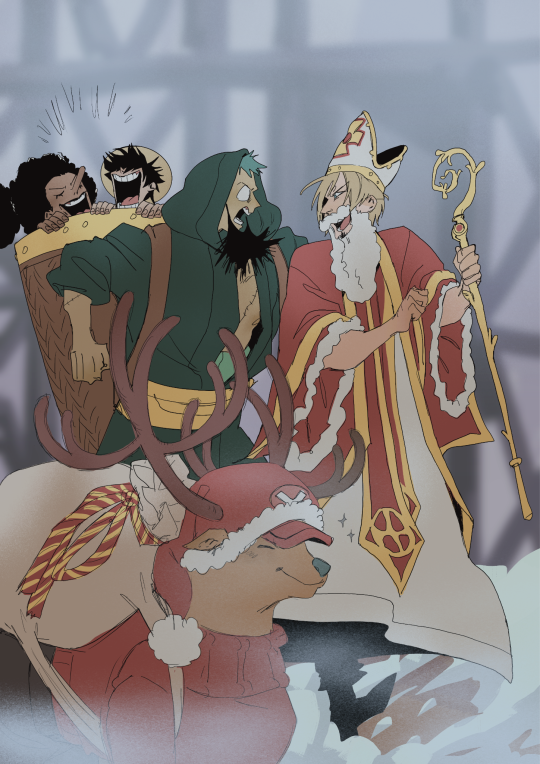
"WHY AM *I* KRAMPUS ?!!!"
"because hes supposed to be scary :p"
day 6 of the ✨One Piece Advent Calendar✨
its Saint nicolas taday, and i know its not celebrated in the rest of the country but im
well im far from home and im missing it lol
#luffy and usopp tried to steal the chocolate#art#artists on tumblr#digital art#advent calendar#op#one piece#saint nicholas#krampus#père fouettard#saint nicolas#sanji#choooer#zoro#usopp#luffy#tony tony chopper#black leg sanji#vinsmoke sanji#roronoa zoro#hadnt even have a manala yet TOT
1K notes
·
View notes
Text
"kill them with kindness" WRONG. Santa attack
🎅👊💥🎅👊💥🎅👊💥🎅👊💥🎅👊💥🎅👊💥🎅👊💥🎅👊💥🎅👊💥🎅👊💥🎅👊💥🎅👊💥🎅👊💥🎅👊💥🎅👊💥🎅👊💥🎅👊💥🎅👊💥🎅👊💥🎅👊💥🎅👊💥🎅👊💥🎅👊💥🎅👊💥🎅👊💥🎅👊💥🎅👊💥🎅👊💥🎅👊💥🎅👊💥🎅👊💥🎅👊💥🎅👊💥🎅👊💥🎅👊💥🎅👊💥🎅👊💥🎅👊💥🎅👊💥🎅👊💥🎅👊💥🎅👊💥 🎅👊💥🎅👊💥🎅👊💥🎅👊💥🎅👊💥🎅👊💥🎅👊💥🎅👊💥🎅👊💥🎅👊💥🎅👊💥🎅👊💥🎅👊💥🎅👊💥🎅👊💥🎅👊💥🎅👊💥🎅👊💥🎅👊💥🎅👊💥🎅👊💥🎅👊💥🎅👊💥🎅👊💥🎅👊💥🎅👊💥🎅👊💥🎅👊💥🎅👊💥🎅👊💥🎅👊💥🎅👊💥🎅👊💥🎅👊💥🎅👊💥🎅👊💥🎅👊💥🎅👊💥🎅👊💥🎅👊💥🎅👊💥🎅👊💥
1K notes
·
View notes
Text

La Légende de Saint Nicolas
63 notes
·
View notes
Text

“Si dieu vient à mourir, nous élirons Saint-Nicolas à sa succession !” 🎄🎁
Proverbe Bulgare
#gif animé#saint nicolas#fête de saint nicolas#décembre#quotes#proverbe#noël#december#6 décembre#december 6#fidjie fidjie
44 notes
·
View notes
Text

Hey, friends! I hope you don't mind if I try to peddle a project I've been working on. After three years of designing, drawing, making prototypes, etc, I'm finally releasing (taking orders for) the wooden wall-hanging Santa's Workshop DisPlayset. I wanted to make something that people can hang in their homes year after year, and to be part of their holiday traditions.

The set comes with Santa, Mrs. Claus, and ten elves.
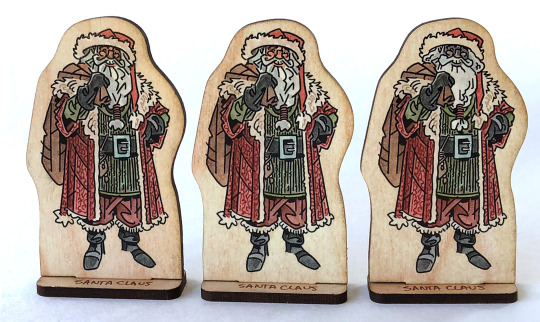
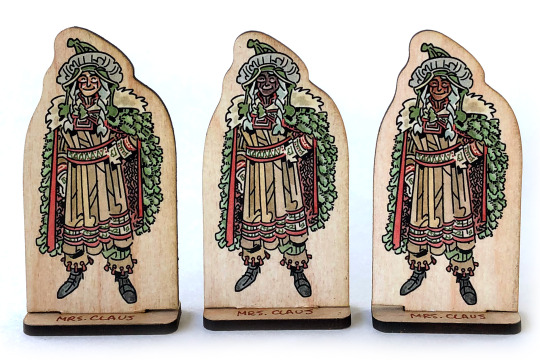
It's made of sturdy 1/4 birch, and has nine platforms on which to position the figures.
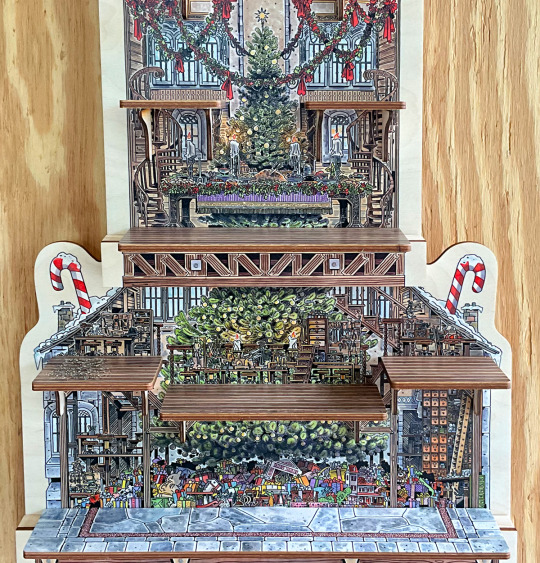
It also has a shelf below the stables on which to place the story cards that come with each figure:
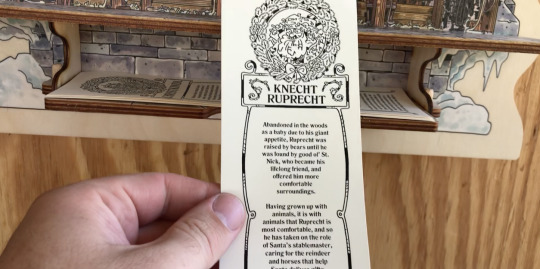
I've also got 25 additional Christmas and winter holiday figures ready to populate the workshop, available either individually or as a big collection:

Thanks for taking a look! I really appreciate it. This has been a labor of love for a while and I'm excited to put it out into the world.
I'll be taking orders for US customers (looking into international shipping, but it's very difficult and pricy to manage) until August 15, 2023 to have them mailed by October 31, 2023 so you right-after-Halloween Christmas decorators can get yours up quick.
You can order the Workshop and/or figures at SchweizerCraft.com
Thanks again!
#Christmas#Folklore#Holiday Decor#Santa#Santa Claus#Handcrafted#Mrs. Claus#Krampus#Mari Lwyd#Bellsnickel#Greek Mythology#Callisto#Ded Moroz#Saint Nicolas#Handmade Toys
384 notes
·
View notes
Text
Aujourd'hui 6 décembre 2024 c'est la Saint-Nicolas
As tu été bien sage ❔❓❔ Vi vi 🎅
10 notes
·
View notes
Text

Il est passé ...
14 notes
·
View notes
Text





🎅🎄 Personnages du folklore de Noël dans différentes cultures. Partie 2
#christmas#noel#drawing#art#character design#charadesign#saint nicolas#saint nicholas#krampus#pere fouettard#christkindel#christkindl#nutcracker#nussknacker#casse noisette
11 notes
·
View notes
Text
As a continuation of my previous post here, to expand a bit more my explanation to @themousefromfantasyland about the French Père Noël, here is even more pictures of the "pre-50s" Père Noël, with a few additional comments about the visual depiction of the character. (Well technically speaking there are some Bonhomme Noël and even Bonhomme Etrennes pictures in there, but since they're all variations of the same guy...)



As you will note by looking at all these pictures (and those of the previous post), there are two main "fashions" when it comes to depicting the Père Noël. One is the "colorful" Père Noël, who wears clothes of brilliant colors - red (which led to the modern Santa Claus look), green, blue, purple... This is a visual habit that also occured in England for Father Christmas.


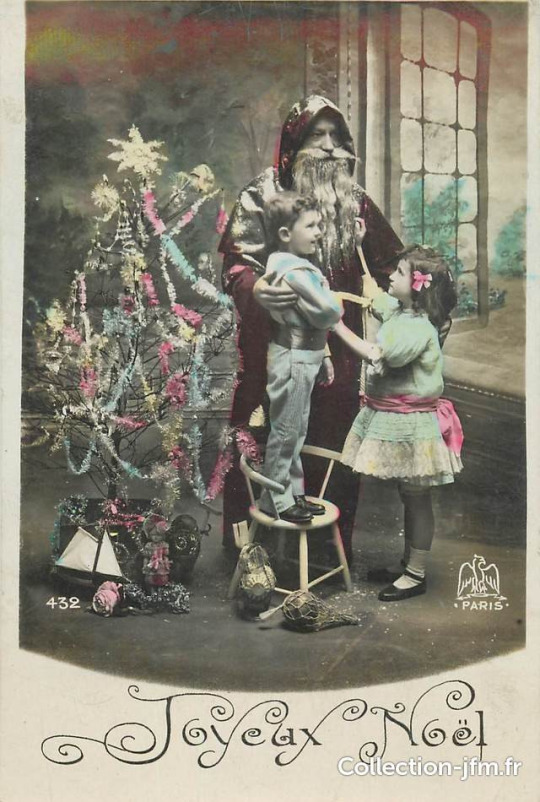
The other would be the "drab" Père Noël, depicted as a poorer and humbler person, with rather brown or dark clothes - usually a robe and a hood instead of fur-lined coats and large cloaks. This second incarnation of the Père Noël, much more unique to France, is also highlighted the disturbing connection if not gemellity between him and Père Fouettard, Father Whipper, the "evil companion" of Father Christmas in France. Père Fouettard is also depicted as an elderly man with a beard, also wearing brown or dark clothes. While sometimes Fouettard's beard is black, it can be white like Noël's, and Fouettard can also carry a wicker basket, but to take children away instead of giving toys... And you have many pictures where both Fouettard and Nël sport the same serious, judgemental, no-nonsense look (a far cry from the jolly Santa Claus).
In fact, you might notice in some of the pictures I shared that among the numerous toys Père Noël brings, there is... sometimes a whip... sometimes a bundle of branches, aka an old form of whip for children... Another one of the fleeting, confused, hesitating sides of Père Noël: sometimes, he doesn't need Père Fouettard as he is the one who gives both the toy and the whip.



I evoked the "monk-like" appearance of Père Noël, but the whole religious imagery needs to truly be explored, as Père Noël is essentialy a toned-down version of Saint Nicholas. The rich bishop clothes are gone - but there's still colorful, rich fur-lined robes with a hat on one side (colorful Père Noël), or clothes that distinctly remind of a monk's outfit (drab Père Noël). There's the ride that is very often a donkey. And the bishop staff is replaced by a walking staff or by a cane. Plus, sometimes Père Noël is shown holding a lantern to light his way through the snowy night - which evokes another archetype, the one of the semi-religious figure of the hermit. Think of the tarot card. The hermit is typically this elderly man with a beard, in simple brown robes, holding a lantern...

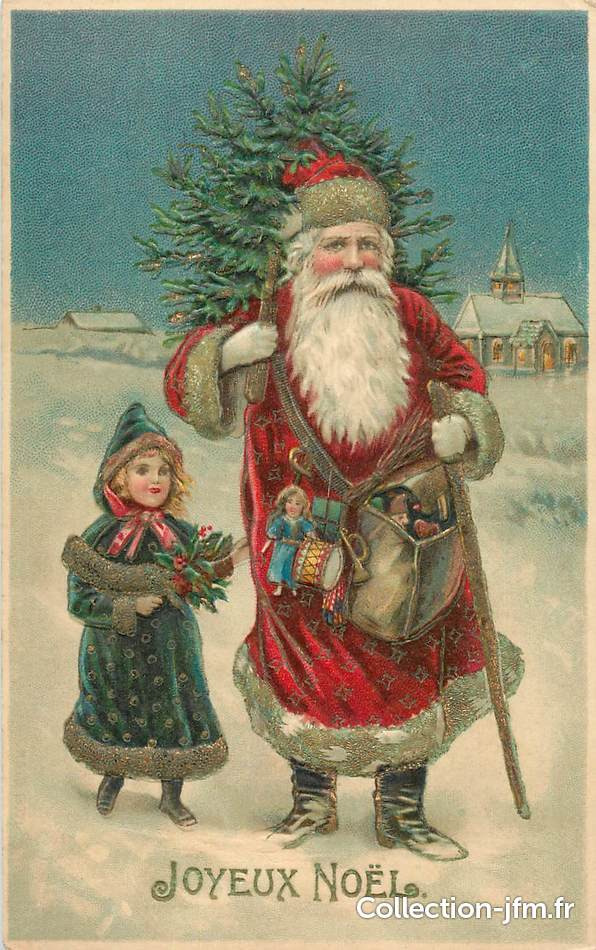
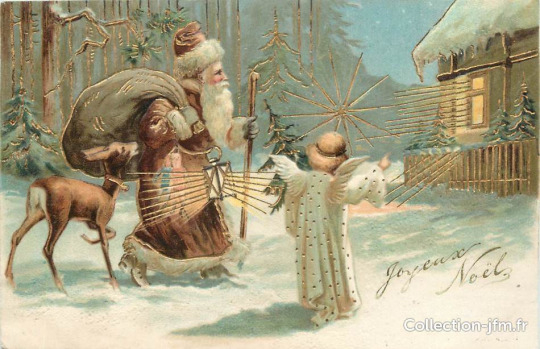
There is also in typical Père Noël depictions a certain tendency to give him robes or cloaks covered in moon or stars symbols. I don't know if there is anything to it, or if it is just an artistic fashion of the time, but I really like how these star-robes and moon-cloaks, coupled with his walking staff, hat and beard, make him look like some sort of fantasy wizard.


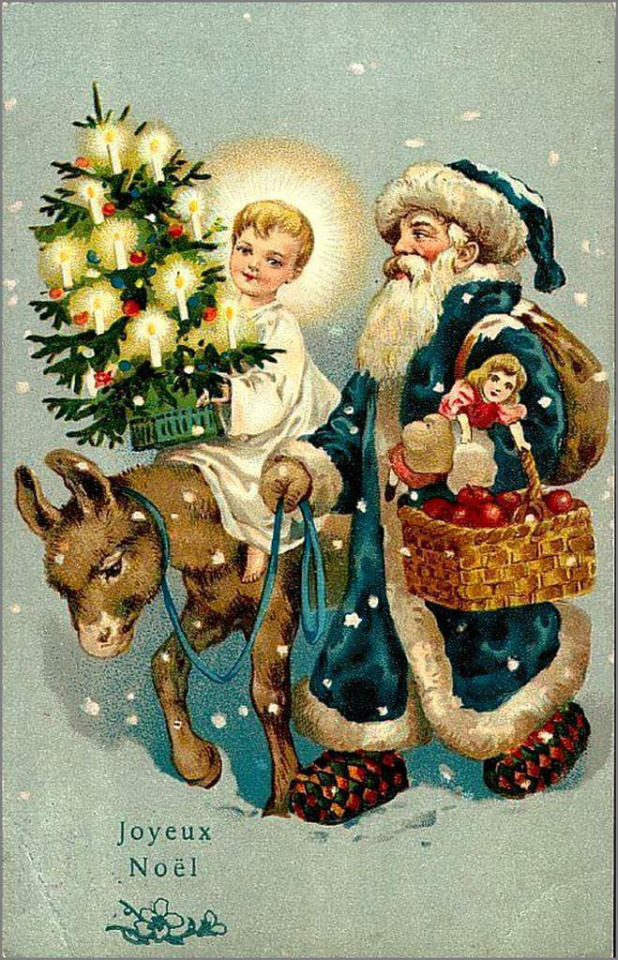
The fact the Christmas lore of Germanic countries reached France through the East is also manifesting itself in those imageries: you'll see leftovers of the Christkindel tradition in the shape of female angel, saint-children and other holy cherubs accompanying Père Noël.

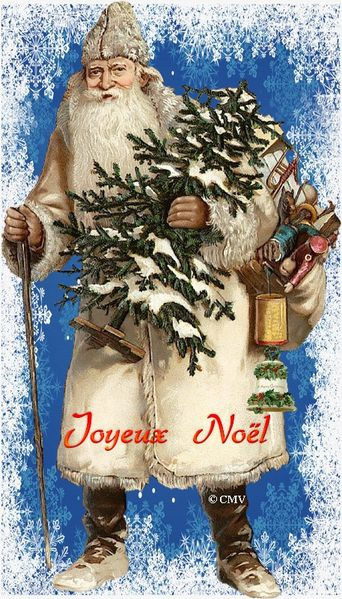

#christmas folklore#christmas lore#père noël#christmas imagery#father christmas#french folklore#christmas art#noël#père fouettard#saint nicholas#saint nicolas#christkindel#christkindl
21 notes
·
View notes
Text

12th day of Christmas : Saint Nicolas
We conclude with Saint Nick, who even if he is celebrated on December the 6th remains above everything the founder figure of Christmas, the religious yet ironically Pagan bridge between the 2 kinds of traditions ! Needless to introduce the one who is both the origin of Santa Claus (it's in his name) and his equivalent/replacement in numerous countries snd regions. A merry Christmas to everyone ! Let us hope you all are spending a much better one than I do !
4 notes
·
View notes
Photo

(via GIPHY)
#giphy#ho ho ho#nikolaus#leofinedesign#wudesign#st nicholas#saint nicolas#nicolaus#nikolaustag#st nikolaus#draussen vom walde komm ich her#snow snow snow
8 notes
·
View notes
Text
Saint Nicholas
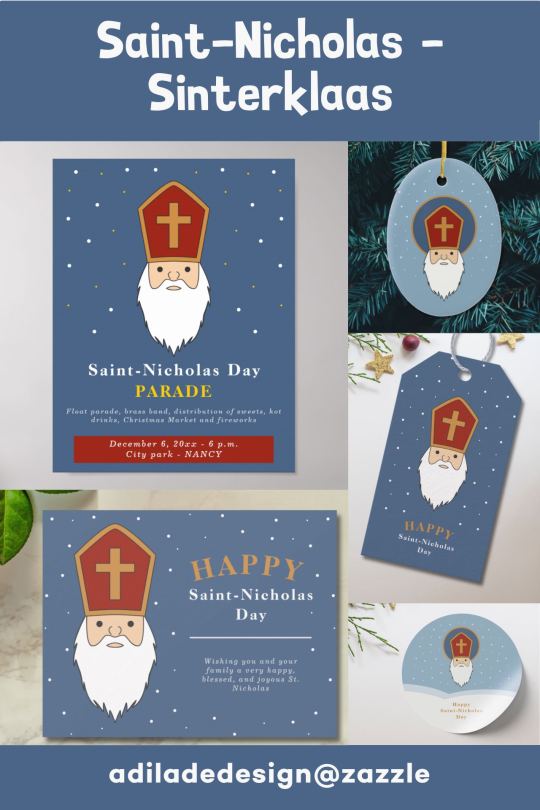
Saint Nicholas: celebrated at the beginning of December in Europe.
#sinterklaas#stnicholas#saintnicholas#st nicholas#saint nicholas#saint nicholas day#saint nicolas#saintnicolas#gift tags#gift tag#sticker design#stickerdesigner#christmas ornament#greeting card#zazzlemade#zazzlestore
7 notes
·
View notes
Text

Meester van de Legende van de Heilige Nicolas
16 notes
·
View notes
Text

Rie Cramer
4 notes
·
View notes
Text

#de casino#Sint-Niklaas#saint nicolas#belgium#belgië#belgique#man or astro-man?#man or astro man?#man or astro man#gig posters#gig poster#surf music#surf rock#affiche#graphic#design#Illustration#art#artwork#concert poster#poster design#music posters#poster art#posters music#posters#poster#garage band#garage music#garage#2013
5 notes
·
View notes
